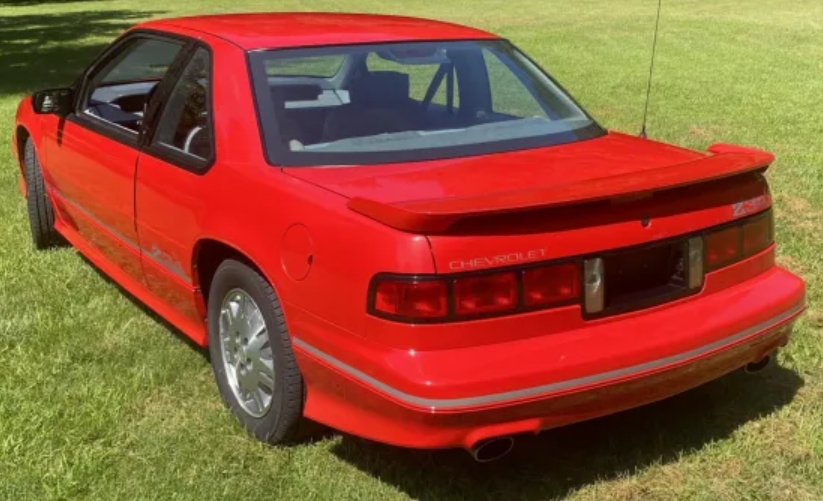The Evolution of the Chevrolet Lumina
The Chevrolet Lumina, an iconic part of American automotive history, was introduced as a mid-size car to cater to the family-oriented consumer market. Produced from 1990 to 2001, the Lumina evolved through various designs, configurations, and technologies, reflecting changing consumer preferences, safety standards, and engineering advancements. In this article, we will explore the comprehensive evolution of the Chevrolet Lumina, detailing its years of production, models, and trim levels over its lifespan.
1. First Generation (1990-1994)
Introduction
The Chevrolet Lumina made its debut in 1990 as a replacement for the Chevrolet Celebrity. Marketed primarily for families, it featured a more modern design and was available in two body styles: a four-door sedan and a two-door coupe.
Models and Trim Levels
- 1990-1992: The initial models included the base Lumina, as well as the Lumina LS and the Lumina Eurosport, which focused on sportier attributes.
- Base: Standard features included a 3.1-liter V6 engine, basic interior amenities, and a simple radio system.
- LS: Added features like upgraded upholstery, alloy wheels, and a more enhanced sound system.
- Eurosport: Featured sport-tuned suspension and unique exterior styling touches.
- 1993-1994: The Lumina received a mild refresh with improved aerodynamics and new safety features. The trim levels were streamlined, and the options for engines expanded.
- Base: Continued the legacy with a solid balance of comfort and performance.
- LS: Enhanced with new technology, including available anti-lock brakes.
- Eurosport: Maintained its sporty focus with improved handling and aesthetic upgrades.
Sales and Impact
The Lumina quickly gained popularity, capturing a considerable market share in the mid-size car segment, thanks in part to its spacious interior and competitive pricing. It didn’t take long for the Lumina to become synonymous with reliability and family functionality.
2. Second Generation (1995-2001)
Introduction
In 1995, Chevrolet introduced the second generation of the Lumina, which continued the brand’s focus on family-friendly features while introducing new design elements and technology.
Models and Trim Levels
- 1995-2001: The Lumina was available primarily as a four-door sedan, with the coupe body style phased out. The trim levels also witnessed a change:
- Base: Equipped similarly to the previous model, it featured a refined interior with improved materials and comfort.
- LS: Offered more comfort and convenience features like power windows and mirrors, as well as upgraded sound systems.
- LTZ (1996-2001): Introduced as the premium trim, the LTZ came with luxury features such as leather seating, upgraded audio systems, and optional performance enhancements.
Powertrains
Throughout its second generation, the Lumina was offered with several engine options. The most common was the 3.1-liter V6, but later years included a more powerful 3.4-liter V6 that was available as an upgrade, providing better performance for consumers.
Safety and Technology
The Lumina second generation also focused on safety with the introduction of more robust airbag systems and improved crash-test ratings, addressing growing consumer concern for vehicle safety. Technology upgrades included more refined audio systems and the option of a CD player, which was becoming popular among consumers.
Sales and Discontinuation
The Chevrolet Lumina saw robust sales throughout the 1990s, becoming one of the best-selling cars in America. However, by the early 2000s, sales began to decline as consumer preferences shifted towards SUVs and crossovers.
3. The End of Production
Production of the Chevrolet Lumina officially ended in 2001. As the market continued to transition towards larger vehicles, Chevrolet made the strategic decision to discontinue the Lumina nameplate in favor of models like the Chevrolet Malibu and other SUVs. The Lumina was overshadowed by the growing popularity of sport utility vehicles, which provided the family space and versatility that many consumers were looking for.
4. The Lumina’s Legacy
Even though the Chevrolet Lumina was discontinued, it left a lasting legacy within the automotive industry. It was recognized for:
Versatility and Reliability
The Lumina offered substantial trunk space and comfortable seating for families, making it an appealing option for everyday use. Its reliability and low maintenance costs contributed to a loyal customer base.
Competitive Pricing
The affordability of the Lumina kept it popular throughout its production run, allowing it to compete well with contemporaneous models from Ford, Toyota, and Honda.
Cultural Impact
The Lumina is fondly remembered by many Americans who grew up in the 1990s. It served as the backdrop for family trips, carpools, and daily commutes, embedding itself in the memories of its drivers and passengers alike.
Influence on Future Models
The Lumina helped set the stage for future Chevrolet models, showcasing the brand’s shift toward accommodating consumer needs in spaciousness, comfort, and safety. It helped Chevrolet to solidify its reputation within the family car segment.
.
Cars + women = Hotties With Dodge Challengers
.
Conclusion
From its debut in 1990 to its discontinuation in 2001, the Chevrolet Lumina represented American automotive culture’s evolution. Through two generations, a range of models, and various trim levels, it catered to family needs while adapting to market trends and safety requirements. Today, the Lumina is a nostalgic reminder of a time when mid-size sedans dominated the roads of America, and its impact is still felt in Chevrolet’s current lineup of vehicles. While it may no longer be in production, the Chevrolet Lumina remains an enduring symbol of reliability, comfort, and affordability within automotive history.







